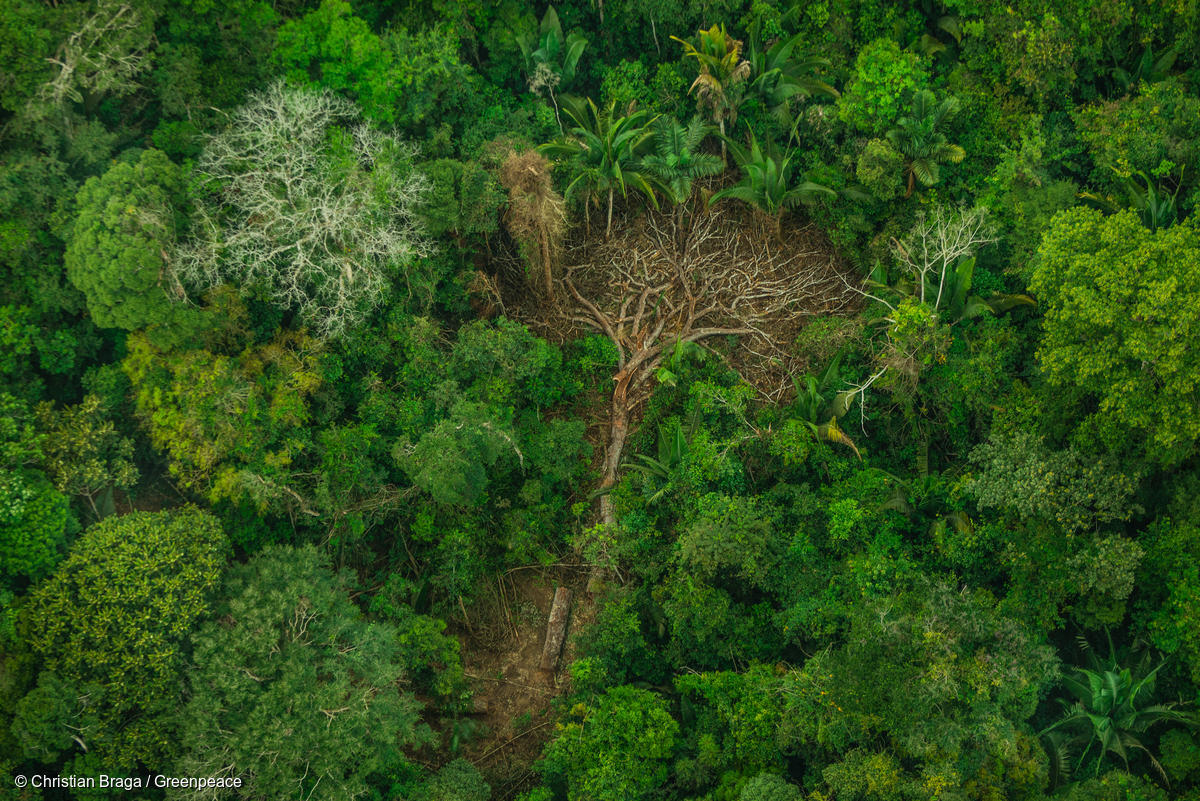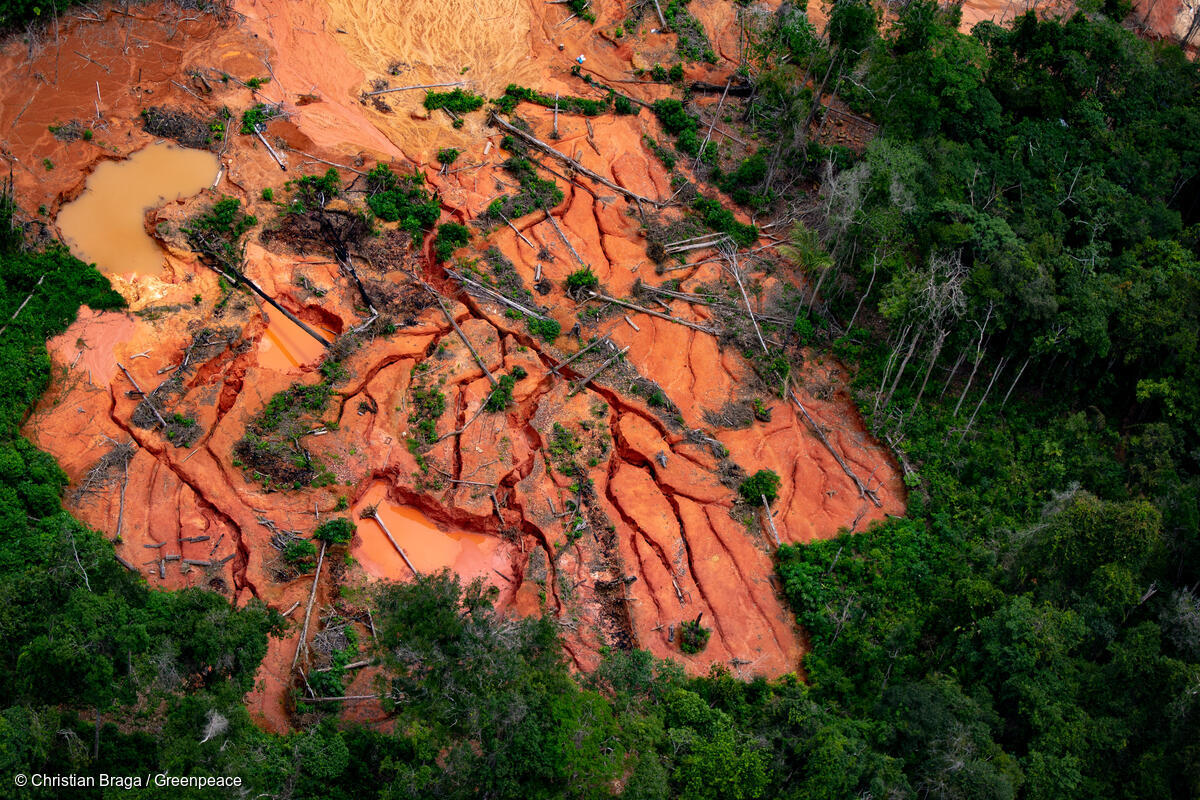- Police, prosecutors, money-laundering experts and others convened last week in Brazil to tackle drug and environmental crimes like illegal mining and logging that are growing in scale across the Amazon.
- The group resolved to move law enforcement beyond occasional raids and periodic destruction of machinery used by organized crime syndicates and toward a concerted and pan-Amazonian push for local, regional and global cooperation on law enforcement.
- While acknowledging the increasing scale of these crimes, participants were optimistic: “We are living in a new moment to fight environmental crime and protect the Amazon,” said the newly appointed director for Amazon environmental crime with Brazil’s federal police, for example.
- This post is a commentary. The views expressed are those of the authors, not necessarily of Mongabay.
Illegal deforestation, wildcat mining, drug trafficking, and lethal violence: Name your scourge and the Amazon Basin seldom disappoints. But as an unusual compact between police officers, prosecutors, environmental protectors, and money-laundering experts convened last week in Manaus shows, ruin can also give way to reflection – and even prospects for rapid response and building local resilience. While there is growing recognition that drug and environmental crimes are growing in scale and intensity across the region, there is also an expanding resolve to do something about the issue.
“Even while the world may be falling apart, Colombia is falling together,” the anthropologist Wade Davis famously wrote in 2016. Davis was commenting on the Colombian peace accord that ended one of the modern world’s longest shooting wars. But it’s not a stretch to believe that it was a lifetime immersed in the millennial cultures of the Amazon that shaped his outlook on one of the hemisphere’s darkest chapters.
While it’s too soon to say the Amazon Basin is falling together, a recent event organized by our organization, the Igarape Institute, plus Interpol and the Iberian-American Association of Public Prosecutors in the historic Brazilian river port of Manaus was a meaningful step in the right direction. The event gathered experts from across Brazil, Colombia and Peru to reflect on the dire straits facing the iconic tropical biome, its people and the global climate should today’s leaders miss their cue.

Environmental crimes such as land grabbing, illegal logging and gold mining are razing the Amazon Basin at a breakneck pace, as research by our organization and others has consistently warned. This is not an environmental tragedy; each of these acts is a crime, typically clustered with other crimes. And while many of these nature crimes are committed by people living at the margins with few economic alternatives, they are also increasingly orchestrated by well-financed gangs and networks of outlaws operating transnationally and untroubled by the law.
A particularly worrisome development is the growing involvement of highly sophisticated drug trafficking factions, especially in Brazil, Colombia, Peru and also Ecuador. Owing to surging cocaine production and transshipment, armed groups such as the Primary First Command (PCC) and ex-FARC guerrillas are carving out a trail of resource predation, insecurity and spiraling violence in municipalities across the river basin. Wildcat gold prospectors financed by drug barons and local mafia are a growing menace to standing forests and biodiversity, especially in fragile border areas.
The rapidly deteriorating rule of law in areas where drugs and illicit commodities are trafficked is triggering new cycles of environmental destruction. In the wake of unprecedented drug trafficking in 2021 and 2022, the first few weeks of 2023 witnessed record-setting levels of deforestation in rainforest hotspots. Analysts refer to this as “narco deforestation” as criminal networks launder their profits into land speculation, clearcutting, agriculture and cattle production. The only way to deter this deadly feedback loop is to take back the Amazon. More than flashy raids and periodic destruction of machinery, what is needed is a concerted pan-Amazonian push to nurture local, regional and global cooperation.
The timing of the Manaus gathering was auspicious. The conference which involved police, prosecutors, environmental protection agents and anti-money laundering specialists kicked off as hearings began in the Bruno Pereira-Dom Phillips murder trial. Pereira, a Brazilian Indigenous expert and activist, and Phillips, a British journalist, were ambushed and killed in June 2022, while working in a crime-ridden swath of the Javari Valley, in Brazil’s Amazonas state, where Brazil abuts Peru. The brutal killings caused an international outcry. They also drew renewed attention to the emergency in the Amazon, where wanton crimes fuel not one but three interconnected crises of planetary proportions: massive pollution, loss of biodiversity, and dangerous and potentially irretrievable climate change.

A number of transnational criminal organizations are behind the surging ecosystem of environmental crime in the Amazon Basin, many of them operating with near impunity. Alongside narco-traffickers is another alpha class of transgressor: tens of thousands of wildcat prospectors swarming mining sites, including on nominally protected and Indigenous land. Indeed, illegal gold is the new cocaine, according to Oscar Mojica, the head of environmental protection of Colombia’s national police, who noted that a kilo of cocaine powder in Cartagena fetches $2,000, while a kilo of gold earns $20,000. And toxic chemicals like cyanide and mercury used to extract gold are contaminating the region’s rivers and ecological systems with devastating implications for population health.
A grim metric for these criminal economies is the cresting homicide rate, which in many Amazon Basin departments and municipalities runs double the national averages. And as criminal violence rises, national and state-level efforts to protect biodiversity and reduce forest felling also falter. Amazonian provinces are setting the pace for lethal violence in Peru. The story is much the same in Colombia and in Brazil, where 13 of Latin America’s largest country’s 30 most violent cities lie within the river basin. Indeed, the same prison-based criminal gangs that spread fear, drugs and violence in Bogota, Lima, São Paulo and Rio de Janeiro have set up franchises in the Amazon.
Experts at the Manaus event agreed that the two most important lubricants for environmental crime are money laundering and corruption. Crime syndicates spanning the Amazon Basin, as well as the Americas and Europe, cover their tracks by filtering the proceeds from their plunder through legitimate banks and the legal marketplace. Hence the renewed transnational focus, emphasized by representatives of the UN Office for Drugs and Crime, the Financial Action Task Force for Latin America (GAFILAT), and the European Union’s El Paccto initiative, to track, investigate and disrupt the flows of dirty money through improved financial intelligence and regional cooperation. Participants called for the renewal of agreements to share knowledge between institutions and governments, and launch practical, data-driven crime investigations, inspection and policing.
View all of Mongabay’s Amazon conservation news here

True, South American countries have called for more regional cooperation to fight environmental crime before. The Leticia Pact, launched in 2019, began with fraternal vows of a regional allegiance to stop illegal felling and burning and encourage sustainable farming and forestry. But by 2022, little had been achieved, as diverging ideologies and competing national priorities, plus the COVID-19 pandemic, dampened the enthusiasm for cooperation among nations of the Amazon Basin.
Yet seismic political shifts in several countries straddling the Amazon Basin have elevated the importance of collectively protecting and conserving rainforests and promoting sustainable alternatives for local residents. The pivot is evident in Brazil, where President Luiz Inacio Lula da Silva, who took office in January, has restored protecting the rainforest and its people to the top of the national agenda. He has called for zero deforestation and urged his government to end illegal mining in the wake of the humanitarian disaster in the Yanomami region.
In Colombia, the new administration of Gustavo Petro has vowed to crack down on the legal and illegal drivers of deforestation. Petro intends to build on his predecessor’s initiative, the 2021 Law for Environmental Crime, but faces stiff opposition from ranchers and the palm oil industry as well as a burgeoning criminal economy. And despite chronic political instability in recent years, there is a sense of renewed purpose in Peru. General Enrique Felipe Monrroy who oversees the country’s environmental crime police stressed how progress was being made, but risked stalling unless law enforcement ratcheted up collaboration.

There is also evidence of growing engagement in regional and international partnerships to take on environmental crime, including calls to revitalize the Amazon Cooperation Treaty Organization. Lula recently announced that Brazil will host a leaders summit of the eight Amazonian nations in August 2023 in Belem, where the treaty organization will take a leading role. The European Union has also committed to another round of funding to its Jaguar Network which focuses on illegal timber, gold and wildlife crime, including a call to expand operations in the Amazon Basin.
Notwithstanding the formidable challenges ahead, participants of the meeting in Manaus were quietly optimistic. “We are living in a new moment to fight environmental crime and protect the Amazon,” according to Humberto Freire, the newly appointed director for environment crime reduction in the Amazon for Brazil’s federal police. There may be no alternative. Driving the new urgency is a consensus that the plunder of the world’s largest tropical forest is fast becoming a problem of untold global dimensions, with knock on effects for the climate, collective safety and wider stability.
Nowhere are the risks – and potential rewards – greater than among the nations of the river basin themselves. Whether they can meet the challenge and fall together before the Amazon falls apart, ultimately, is also up to them.
Carolina Andrade is a senior adviser of the Igarapé Institute, where Melina Risso is the research director, and Robert Muggah is the institute’s co-founder.
See related coverage:
Amazonian countries must act together to reverse rainforest loss, experts say